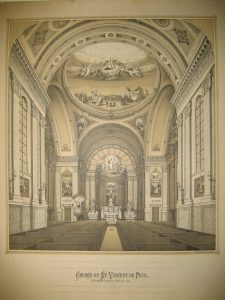
St. Vincent de Paul Parish is the Mother Church of the Germantown neighborhood of Philadelphia, Pennsylvania. Since the founding of the parish in 1851, St. Vincent de Paul’s existence and architectural form have been interwoven into the history of Philadelphia and Germantown.
Tremendous population growth in Philadelphia and the surrounding areas in the mid nineteenth century fueled the rise of industry. Germantown, once a rural town outside of the city limits, was soon to become a burgeoning suburb (Cooperman, 2009). One of the earliest railroads in the United States and Philadelphia’s first railroad was built from 9th and Green Streets in Philadelphia to Germantown. Rowhomes began filling both Philadelphia and Germantown with the same Irish Catholic immigrants who were contributing to the boom (Miller, n.d.; Wilson, 2004). As the young Archdiocese of Philadelphia grew, Bishop Francis Kenrick wrote to the fathers of the Congregation of the Mission of St. Vincent de Paul to ask for their support in running St. Charles Borromeo Seminary. The Vincentians fathers had only just come to the United States in 1816. Although they had limited resources and were unable to accept all the requests for their resources within the country, they accepted Bishop Kenrick’s urgent imploring, in 1841 (Drennan, 1909).
Rising populations brought increased tensions between Protestants, the local majority, and the growing Catholic population (Cooperman, 2009; Warren, 2004). These tensions led to the rise of anti-immigrant and anti-Catholic groups like the “The Native American Party” and the “Know-Nothings” who fanned the flames under the guise of “nativism”. The region’s first nativist meeting was held in Germantown in 1837 and was contemporaneously documented by the Germantown Telegraph (Germantown Telegraph, 1837; Kirlin, 1909; Scharf, 1884). A surviving copy of the Germantown Telegraph can be found at Historic Germantown. Rhetoric became violent in what would come to be known as the “Bible Riots” of 1844. Two Catholic churches in Philadelphia and many homes were burned, dozens of people were killed, and many more were injured over the course of two outbursts of violence each of which lasted several days (Morgan; 2018; Warren, 2004). The Vincentian fathers, who were operating St. Charles Borromeo Seminary by this time, put studies on hold for two months for the protection of their students (Drennan, 1909).
Bishop Kenrick gifted The Vincentians a plot of land in Germantown for a new parish. This allowed the Vincentians to establish roots in the area and spread the Catholic faith tradition into the suburbs (Drennan, 1909). The Germantown Catholic community consisted of only around a dozen families, however the potential for growth was recognized by the Archdiocese, as the suburb began to percolate (Kirlin, 1909). St. Vincent de Paul Parish was to be the first Catholic church in Germantown and among the early Vincentian Congregations in the country.
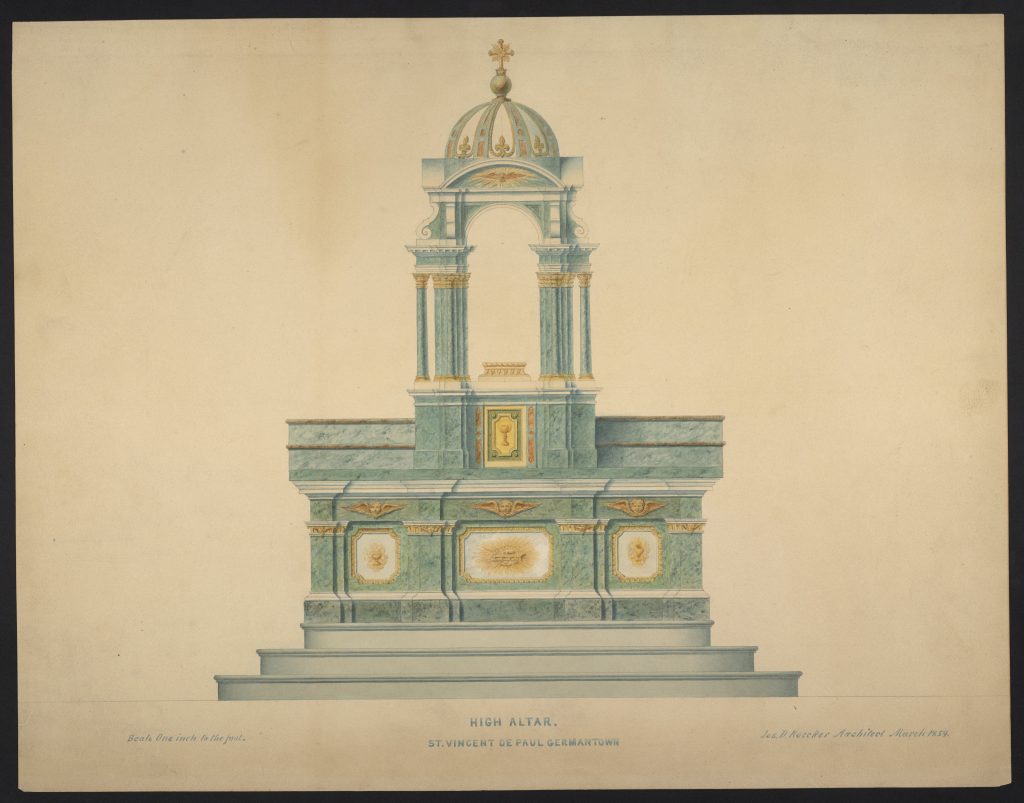
The establishment of the new Parish was not without strife. Nativism had gained local political influence in the time since the nationally infamous Bible Riots a few years prior (Scharf, 1884). Father Domenec was named first pastor of St. Vincent de Paul and the overseer of construction (Drennan, 1909). He recounted having been subject to threats ranging from stalwarting to violence in order to prevent the construction of St. Vincent de Paul (Drennan, 1909; Rybolt, 1888). On September 2, 1849 the cornerstone for St. Vincent de Paul Parish was lain. Two thousand people were in attendance, both Catholics and well-wishers (Drennan, 1909; U.A., 1916). The cornerstone contains a time-capsule within a leaden box with newspaper clippings, coins, and a Latin inscription commemorating the event. In consistency with their threats, about twenty protestors also gathered at the ceremony site (Drennan, 1909; St. Vincent de Paul Parishl, 1901). Tensions mounted as they jeered the crowd, shouting insults. Witnesses reported that stones were thrown at the celebrating masses, but that the officiants would not be deterred and pressed on with the celebration. Having caused no effect on the proceedings, the protestors eventually dispersed (Drennan, 1909; St. Vincent de Paul Parish, 1901; St. Vincent de Paul Parish, 1951; U.A., 1916). The outcome of events granted victory not only to those assembled on that day, but symbolically for the growing Catholic community in Germantown.
Construction of the church’s nave was completed and the first Mass offered on July 13, 1851. As the congregation was initially small in number, it took additional years to raise the funds and complete the construction of the remainder of the church (Drennan, 1909; St. Vincent de Paul Parish, 1951). The completed St. Vincent de Paul Parish is remarkable for its austere design, which is a unique blend of Italianate and Greek revival styles. Notably the partially completed structure, in 1851, had a striking presence. Germantown residents mused over the severe appearance of the free standing, stone box nave of St. Vincent’s, calling it “Domenec’s Folly” (Drennan, 1909). However as additional tithing funds were raised from the expanding Catholic community, the transepts and dome were completed and the ultimate Greek cross architectural vision was executed. The completed St. Vincent de Paul Parish assumed its grand place over the skyline of Germantown in 1859 (St. Vincent de Paul Parish, 1901; St. Vincent de Paul Parish 1951).
Today, the property of St. Vincent de Paul Parish is again owned by the Archdiocese of Philadelphia. The church has remained a Catholic house of worship and, after the establishment and subsequent modern-day closures of several other churches, is again the only Catholic church in Germantown. The church continues to be operated by Vincentian pastors. St. Vincent de Paul’s faith tradition remains strong; the present-day church community is thriving and espouses the same values of service and inclusivity on which it was founded over one hundred and seventy years ago.
Compiled by Justine LaPierre
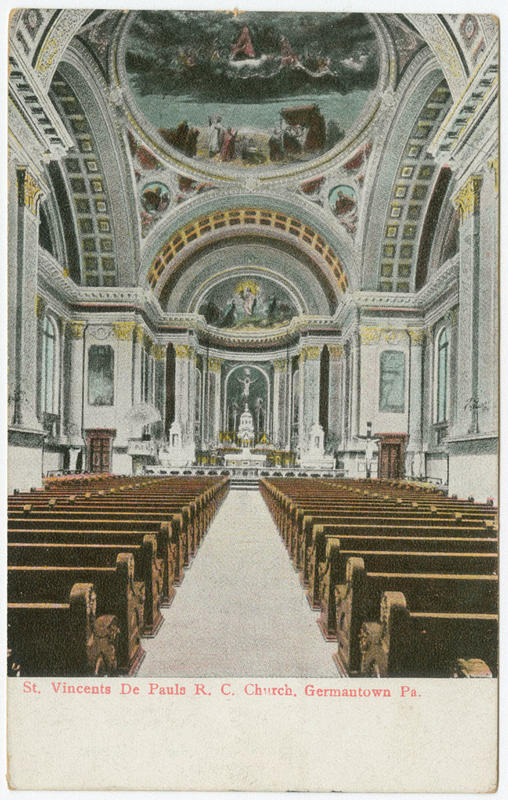
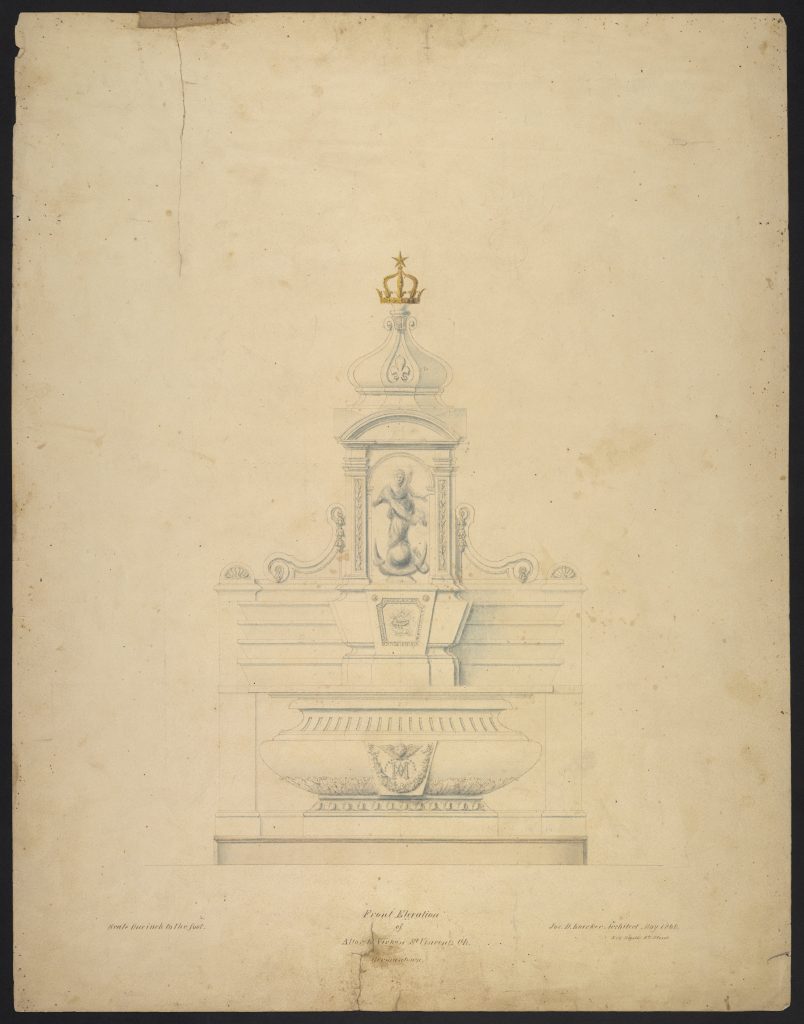
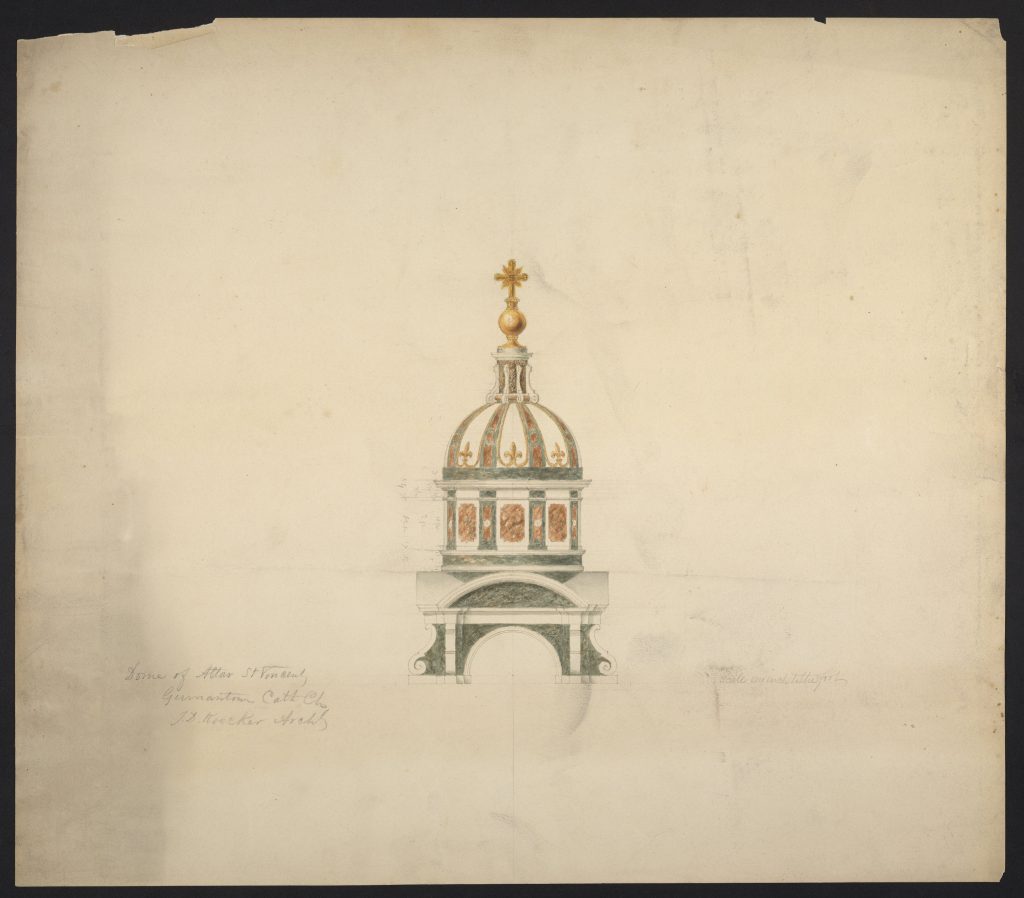
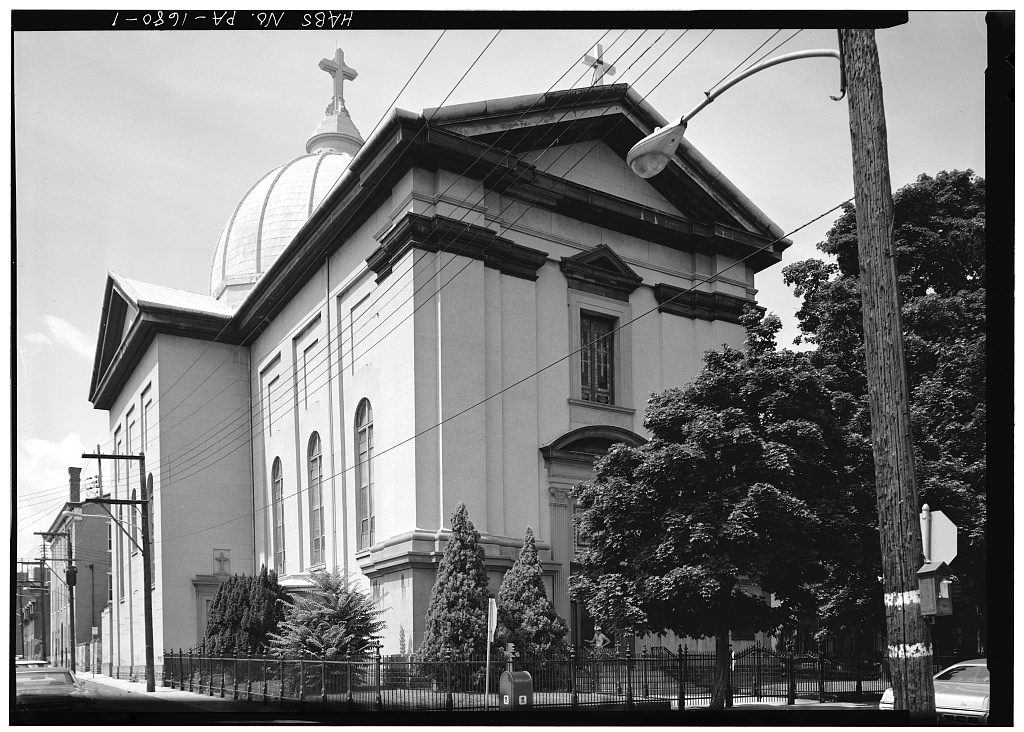
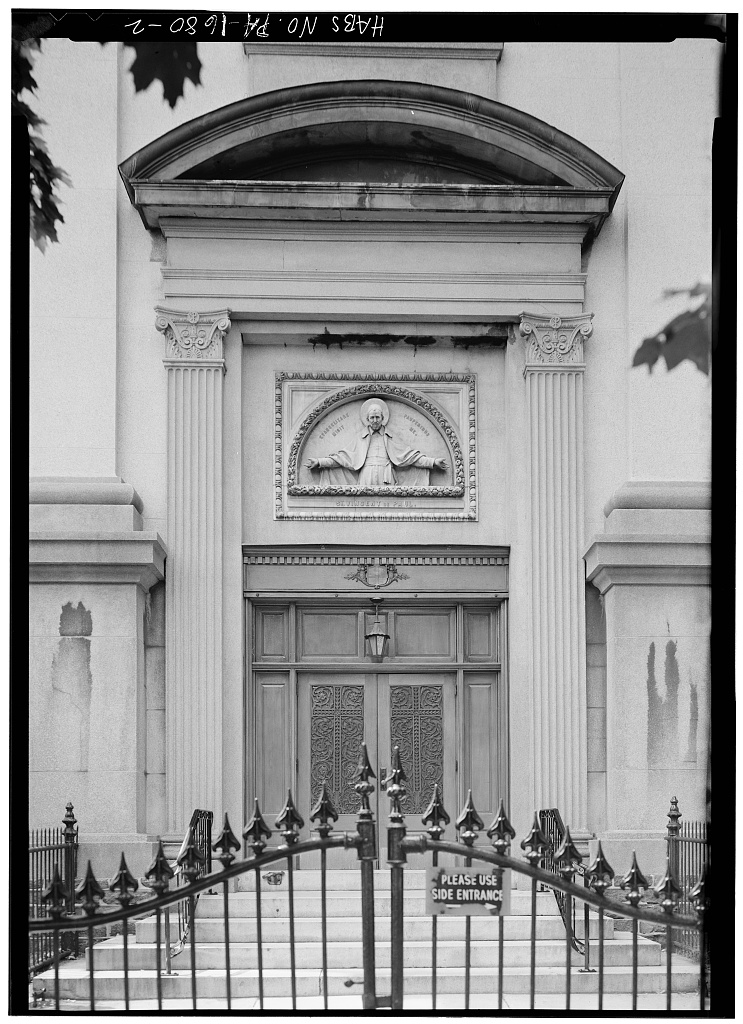
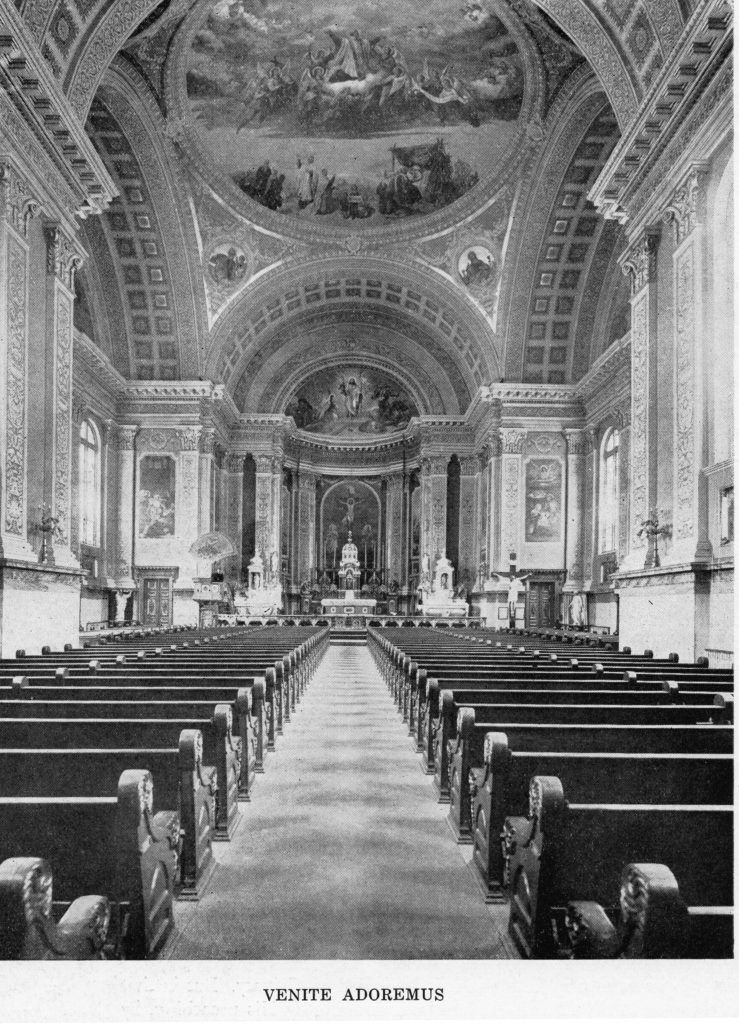
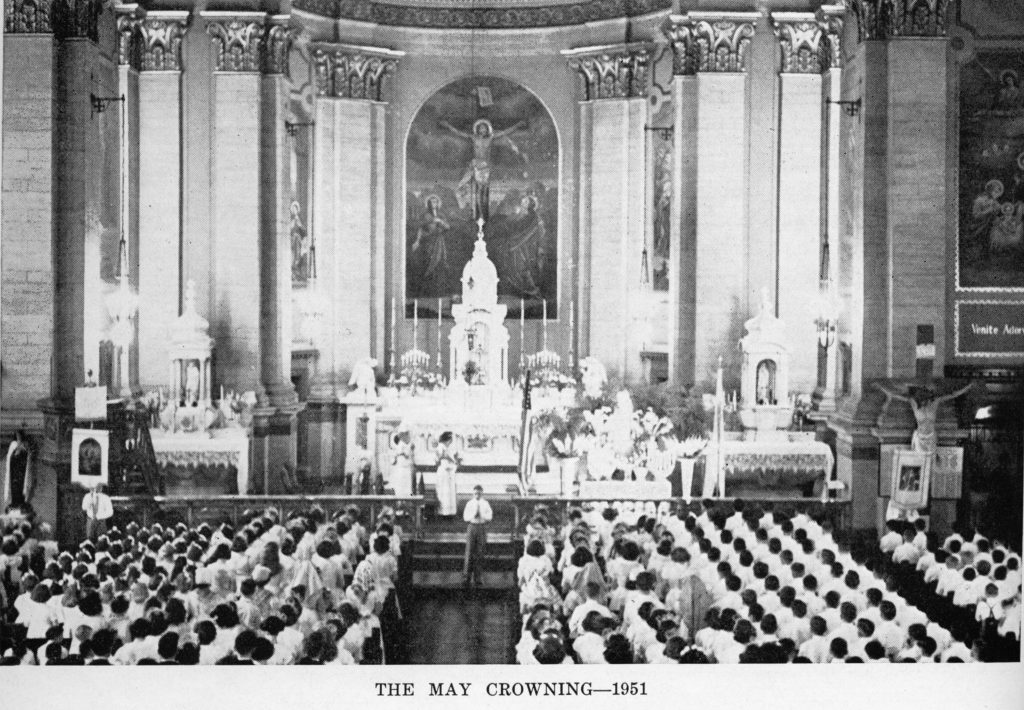

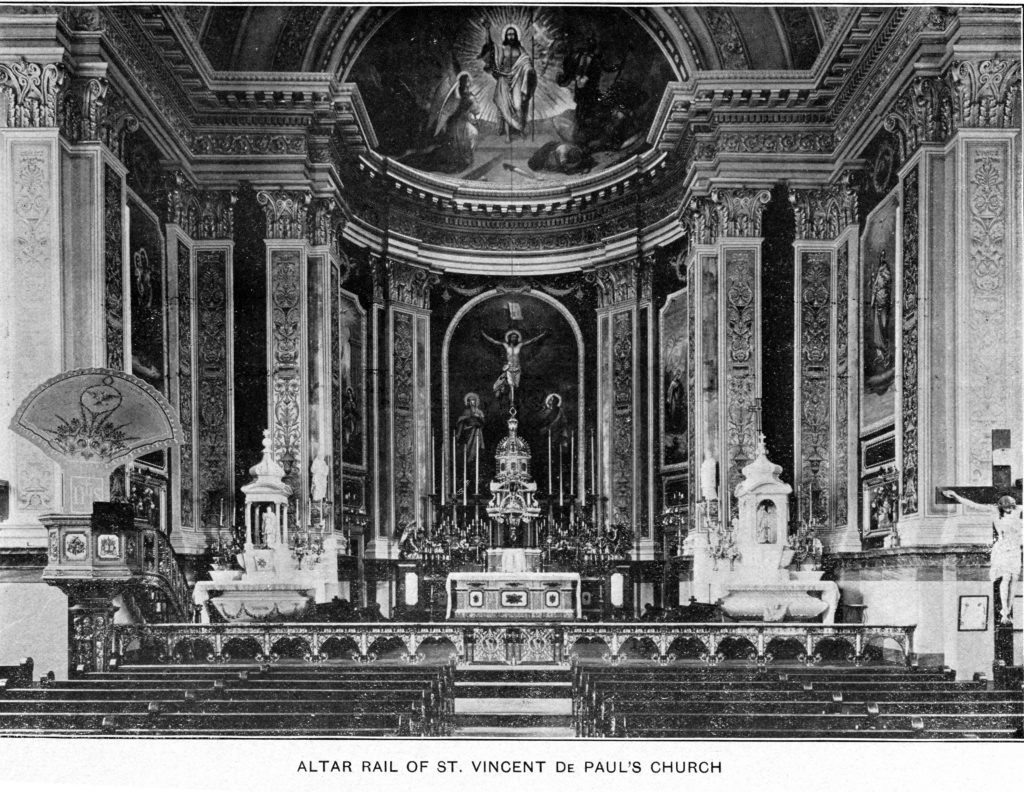
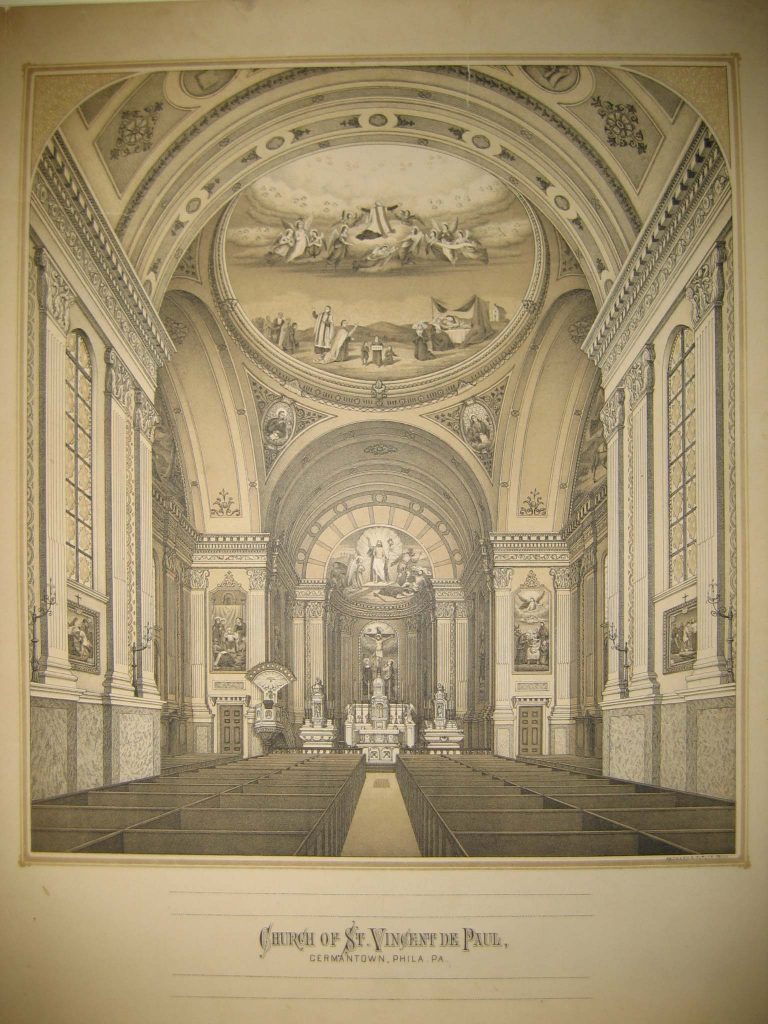
Bibliography
Cooperman, E.T. (July, 2009). Overview Historic Context Statement for the City of Philadelphia. Architectural Research and Cultural History: Historic Preservation Consulting prepared for the Preservation Alliance for Greater Philadelphia. pp 1-21.
Drennan, N.A. (March, 1909). The Early History of “The Congregation of the Mission” in Philadelphia, Records of the American Catholic Historical Society of Philadelphia, Vol. 20, No 1., pp 4-21. Accessed at https://www.jstor.org/stable/44208030 7/28/19 2:03 UTC
Kirlin, J.L.J. (1909). Catholicity in Philadelphia from the earliest missionaries down to the present time. pp 306, 347-348.
Miller, F.M. (n.d.) Philadelphia: Immigrant City. Bach Online Resources. Accessed at http://www2.hsp.org/exhibits/Balch%20resources/phila_ellis_island.html on 1/25/2020 5:27 EST
Morgan, A. (2018). The Philadelphia riots pf 1844: Republican Catholicism and Irish Catholic apologetics. Pennsylvania Historical Society. Accessed at https://pa-history.org/wp-content/uploads/2018/09/Morgan-Pencak-Paper-2018-.pdf on 2/25/20 at 12:05 EST
Rybolt, J. (1988). “The American Vincentians: A Popular History of the Congregation of the Mission in the United States 1815-1987”. Vincentian Digital Books. 18. https://via.library.depaul.edu/vincentian_ebooks/18
Scharf, T.J. (1884). History of Philadelphia, 1609-1884. Philadelphia: L.H. Everts. pp 663-672.
St. Vincent de Paul Parish (1901). Golden Jubilee Souvenir: St. Vincent de Paul’s Church. Self published.
St. Vincent de Paul Parish (1951). The Parish of St. Vincent de Paul: The Mother Parish of Germantown. Self published.
Unknown Author. (1916). Newspaper clipping located in Historic Germantown’s folder for St. Vincent de Paul Church. Sheet labeled “Catholics-Churches-St Vincent de Paul”.
Warren, R.A. (October, 2004). Displaced “Pan-Americans” and the transformation of the Catholic Church in Philadelphia, 1789-1850. The Pennsylvania Magazine of History and Biography Vol. CXXVIII, No. 4. pp 343-366.Wilson, K.E. (2004, May). Historic Preservation of the Peopling of America. From the Hearing before the Subcommittee of Criminal Justice, Drug Policy and Human Resources of the Committee on Government Reform. Accessed at https://books.google.com/books?id=FDCpl06Ds_MC&pg=PA78&lpg=PA78&dq=irish+immigrants+working+on+the+railroad+and+moving+to+germantown+pa&source=bl&ots=OcIwwQMhve&sig=ACfU3U295itFM226EpFIKZNdk-gg5ueT1Q&hl=en&sa=X&ved=2ahUKEwjSisTE4J_nAhWKuVkKHa4nDJ8Q6AEwEHoECAYQAQ#v=onepage&q=irish%20immigrants%20working%20on%20the%20railroad%20and%20moving%20to%20germantown%20pa&f=false on 1/25/2020 12:36 EST.
